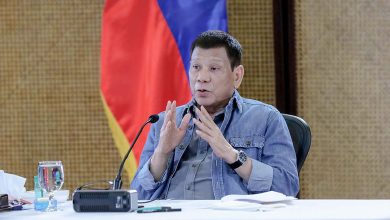[B-SIDE Podcast] Building stronger healthcare

Follow us on Spotify BusinessWorld B-Side
How are Philippine hospitals evolving after the pandemic? What important lessons have they learned from the crisis? In this B-Side episode, BusinessWorld reporter Patricia B. Mirasol speaks with Eugenio F. Ramos, president and chief executive officer of The Medical City (TMC), about the importance of public-private partnerships, embracing technology, and addressing staff-related difficulties.
Continue to foster public-private partnerships.
The COVID-19 pandemic was a time for everyone in the public and private sectors to set aside their differences and work together, according to Mr. Ramos.
He said that such collaborations, which he called the “silver lining” of a “traumatic” period, need to continue.
“The Philippine healthcare system was really dismal,” he said. “The DoH (Department of Health) needed help. It wasn’t a time for appointing blame [but] for working together.”
TMC initiated calls with other hospitals to ensure that those who cannot be accommodated in its hospital can be sent elsewhere. “We had to collaborate in terms of providing healthcare to those in need,” Mr. Ramos said.
Such collaborations are also necessary because the likelihood of another pandemic lurks, he added.
The complex drivers of zoonosis – such as climate change, pollution, and disasters – are some of the reasons for emerging pandemic threats, according to Noel Lee J. Miranda, a consultant specializing in the topic.
The Philippines already has three viruses that are in the same family as pathogens identified by the World Health Organization as having “pandemic potential”, with a fourth one on the horizon.
Utilize technology for better decision-making and improved efficiency.
TMC’s enterprise – with its flagship complex in Pasig, Manila, four provincial hospitals, and over 50 clinics – is in varying stages of the digital journey.
The company started to use artificial intelligence (AI) for its diagnostic services such as mammograms.
It is also “getting into AI for its ECG (electrocardiogram) and echo (electrocardiogram),” Mr. Ramos said. It is not to replace people but to improve the processes’ efficiency, he added.
The secret to AI is people, according to an August 2020 article by Harvard Business Review.
Gaining a competitive advantage in AI requires transforming “the way companies do business so human resources can be augmented with machine power.”
AI can likewise be used to make faster data-driven changes, a 2023 McKinsey report noted.
“Post-pandemic, we have to prepare ourselves in terms of how we get data. Sometimes, the decisions may not be the best decisions, but those that are quick and helpful to the most number of people,” Mr. Ramos said.
Give staff good reasons to stay.
Healthcare staff are not commodities and should not be treated as such, Mr. Ramos said.
“Filipino nurses are the best in the world, [but] a lot have been siphoned off the country.”
The Philippines is the second-largest exporter of human labor in the world, a 2017 Human Resources for Health study found.
The World Health Organization has projected that by 2030, there will be a shortfall of 18 million healthcare workers in low- to middle-income countries.
The same McKinsey report noted that 39% of its respondents from seven countries plan to leave their jobs within the next three to six months.
Local hospitals need to give them better reasons to stay, said Mr. Ramos.
“Other than giving them a decent salary, empower them with better chances of mobility as far as the career is concerned… A lot want to stay because of their families here.”
Follow us on Spotify BusinessWorld B-Side




